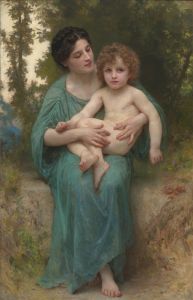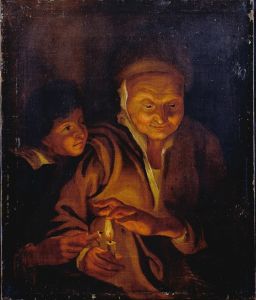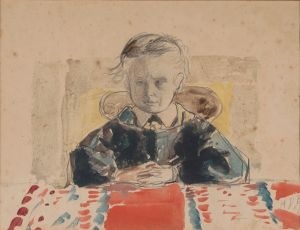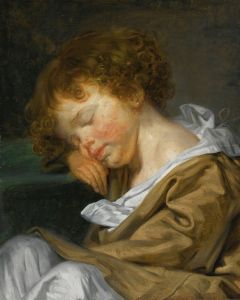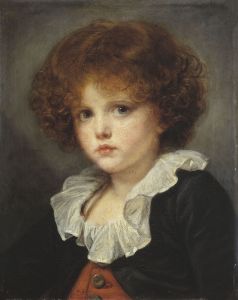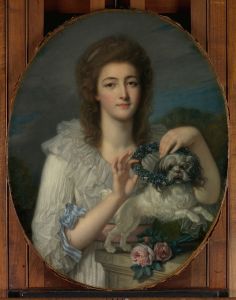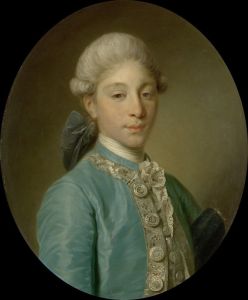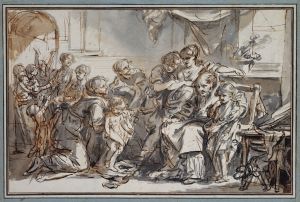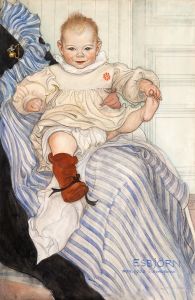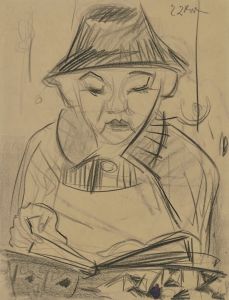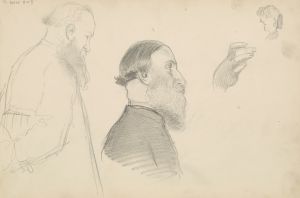
Head of a Young Boy
A hand-painted replica of Jean-Baptiste Greuze’s masterpiece Head of a Young Boy, meticulously crafted by professional artists to capture the true essence of the original. Each piece is created with museum-quality canvas and rare mineral pigments, carefully painted by experienced artists with delicate brushstrokes and rich, layered colors to perfectly recreate the texture of the original artwork. Unlike machine-printed reproductions, this hand-painted version brings the painting to life, infused with the artist’s emotions and skill in every stroke. Whether for personal collection or home decoration, it instantly elevates the artistic atmosphere of any space.
Jean-Baptiste Greuze was a prominent French painter of the 18th century, known for his genre scenes and portraits that often depicted sentimental and moralizing themes. One of his works, "Head of a Young Boy," exemplifies his skill in capturing the innocence and emotional depth of his subjects. Although specific details about this particular painting are limited, it is representative of Greuze's broader body of work and his artistic style.
Greuze was born on August 21, 1725, in Tournus, France. He studied in Lyon before moving to Paris, where he attended the Royal Academy of Painting and Sculpture. His early works quickly gained attention for their emotional expressiveness and technical proficiency. Greuze's paintings often featured domestic scenes and portraits that conveyed moral lessons or explored themes of virtue and innocence.
"Head of a Young Boy" is a portrait that likely dates from the mid to late 18th century, during the height of Greuze's career. While the exact date of the painting is not documented, it aligns with the period when Greuze was producing similar works that focused on youthful subjects. The painting captures the visage of a young boy, rendered with soft brushstrokes and a delicate palette that highlights the boy's youthful features and innocent expression.
Greuze's technique in this painting, as in many of his portraits, demonstrates his ability to convey emotion and character through subtle details. The boy's eyes, for instance, are painted with a depth that suggests a sense of introspection or contemplation, a hallmark of Greuze's portraiture. The use of light and shadow in the painting further enhances the three-dimensionality of the boy's face, bringing a lifelike quality to the canvas.
Throughout his career, Greuze was celebrated for his ability to capture the essence of his subjects, particularly children and young people. His portraits often went beyond mere likeness to explore the inner life and emotional states of the individuals he depicted. This focus on emotional depth and moral themes resonated with the tastes of the time, earning Greuze considerable acclaim and patronage.
Despite his early success, Greuze's later years were marked by a decline in popularity. The changing tastes of the art world, along with the rise of Neoclassicism, led to a waning interest in the sentimental and moralizing style that had characterized much of his work. Nevertheless, Greuze's contributions to the art of portraiture and his influence on subsequent generations of artists remain significant.
"Head of a Young Boy" stands as a testament to Greuze's skill in capturing the subtleties of human emotion and character. While specific details about the painting's provenance or current location may not be readily available, it remains an important example of Greuze's artistic legacy. His ability to infuse his portraits with a sense of life and emotion continues to be appreciated by art historians and enthusiasts alike.
In summary, "Head of a Young Boy" by Jean-Baptiste Greuze is a portrait that exemplifies the artist's mastery of emotional expression and technical skill. Although detailed information about the painting is scarce, it reflects the qualities that made Greuze a celebrated figure in 18th-century French art.





